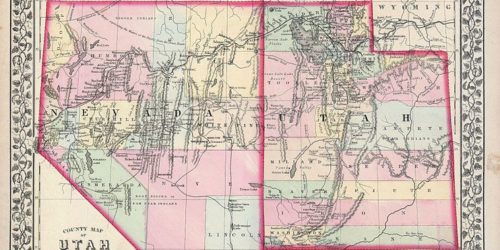In this post, I will give an example from the FamilySearch.org Family Tree, of an entry that has some basic problems. I will then show how those problems can be identified and, if possible, resolved. This process of talking through issues in a particular “case” is similar to the case method used to teach in most law schools in the United States.
Here is my case:
There are already two data problems found by the FamilySearch website, but the real issue is less obvious. Here are the two families side-by-side. By the way, Thomas Sheldon is the son of one of my direct line 6th Great-grandfathers, Isaac Sheldon, b. 1686, d. 1752).
If Thomas Sheldon was born in 1708 and died in 1750, The last three children either do not belong to this family or the dates are wrong because the three were born will after he died. But we need to look further. His wife Harriet Winters is listed a born in 1715 and the first child is listed as born in 1731 when his mother was 16 years old. Not impossible but also something to look into. The last child listed who was not born after the father’s death date was supposedly born in 1747 when the mother would have been 32 years old so 10 children would have been possible. But since she was only about 35 years old, one possibility is that she remarried after her first husband died and the last three children are hers in which case, they have the wrong names.
What do Thomas Sheldon’s 7 listed sources say? The sources substantiate Thomas Sheldon’s birth date and the names of his parents. However, the other six sources came from new.FamilySearch.org and are not at all helpful. Normally, I would detach all six of these extraneous sources. It is apparent that we don’t have a source for Thomas’ death. Some of the listed children have some sources but some do not have any. Where were these children born? Bear in mind that both of the listed parents are shown as born in Rhode Island and dying in New York. They did not travel to England to have children especially after their father died. Here is the list of stated birth locations for each of the children but bear in mind that some of them have no supporting sources.
- Rhode Island
- Rhode Island
- Rhode Island
- Rhode Island
- Rhode Island
- Rhode Island
- Rhode Island
- Rhode Island
- Rhode Island
- Rhode Island
- New York
- New York
- England
I think we can safely say that the three children who are listed as born after the father died probably are not children of this marriage. But wait, the father, Thomas Sheldon, was born in Rhode Island but got married in New York and died in New York. His wife, Harriet Winters, was also supposedly born in Rhode Island and died in New York however, all of the children, except the three born after their supposed father’s death, were listed as born in Rhode Island. If all this is correct then the father could have lived only a very short time in New York before he died. (Note: The sources listed as “Legacy Sources” were copied by the FamilySearch program from earlier programs or databases. Absent some reference to an actual source, they are useless).
Looking at the sources for the children, I find the following:
- Issac Sheldon, Sr. — No record of birth, mention in two census records, will
- Thomas Sheldon — One census record 1790 no birth or death record
- Susan Sheldon — No sources (two legacy sources without any references)
- Gideon Sheldon — No sources
- John Sheldon — No sources (one legacy source with no reference to a source)
- George Sheldon — Burial record (FindAGrave), Mention in a book, will, (one legacy source) no birth date or parents
- Colonel Joseph Sheldon Esq. — A FindAGrave reference with death date and burial date, no birth information
- Benjamin Sheldon — No sources
- Potter Sheldon — two references to the 1790 U.S. Federal Census and a will in 1798
- Caleb Sheldon — FindAGrave reference and a will (legacy source without any mention as to where the information was obtained)
- Hanna Sheldon — FindAGrave reference to burial, birth date, and death date, no parents identified
- Sarah Sheldon — No sources
- Content Sheldon (England) — No sources
In short, there is not one source linking any of these children to their parents. Can this be fixed? Almost all these family members were born in the first half of the 18th Century (the 1700s) and finding records in that time frame is difficult. As is the case with all these issues, I have to ask the question about whether or not I want to take the time to sort out this situation? By the way, there are specifically cited sources for the birth of the father, Thomas Sheldon, and his siblings as the children of Isaac Sheldon and Susannah Potter. However, when I started, there was also no marriage record or even a reference to the marriage of Thomas Sheldon and Harriet Winters. I finally did remove the last child who was born in England.
At this point, there is a real issue as to whether or not to try to “start over” with a family such as this one with NO supporting sources. Where did this information come from?
Over the long run, I usually work with the information that is in the family tree and do some research to see if any of the information is real. After doing some research, I added the following records as sources:
- Thomas Sheldon in the U.S. and International Marriage Records, 1560-1900 showing birth year as 1709 and wife as Harriet Winters in New York.
- Thomas Sheldon in Rhode Island_ Vital Records, 1636-1850
I do have to conclude this post here with the work of researching each of the children unfinished. I suspect that if I am able to find Thomas Sheldon’s (the father) will, I can determine which, if any, of the listed children are actually members of this family. As with much of what we do in genealogy, the immediate results seem unsatisfying and incomplete but many of these seemingly difficult problems succumb to extensive research.








